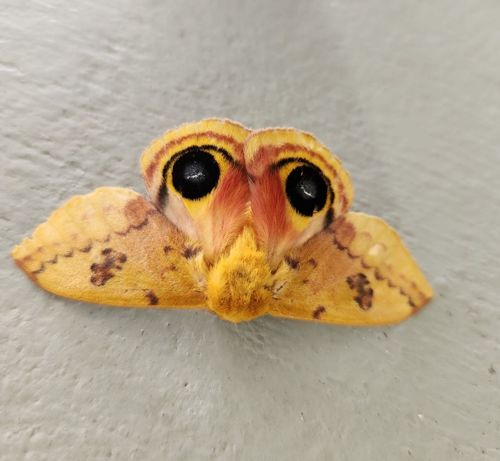Io Moth
Scientific Name: Automeris io
Order & Family: Lepidoptera, Saturniidae
Size: Males: 5-7 cm (2-2.75 inches) wingspan; Females: 6-8 cm (2.4-3.15 inches) wingspan.

Natural Habitat
Deciduous forests, woodlands, suburban areas, and fields across North America, from southern Canada to Florida and Texas.
Diet & Feeding
Adult Io Moths do not feed. Their mouthparts are vestigial (non-functional). Larvae (caterpillars) are polyphagous, feeding on a wide variety of host plants including hackberry, willow, oak, maple, birch, cherry, sassafras, corn, and more.
Behavior Patterns
Nocturnal; adults are attracted to light. The most distinctive behavior is the display of their prominent 'eyespots' on the hindwings when threatened. This serves as a defense mechanism, mimicking the eyes of a larger predator to startle potential attackers. The caterpillars are social in their early instars, feeding in groups, and have urticating (stinging) spines as a defense.
Risks & Benefits
The primary risk associated with the Io Moth is the sting from its caterpillar. The hollow, barbed spines inject a venom that can cause immediate pain, itching, redness, swelling, and sometimes a rash, nausea, or headache. Benefits include their role as pollinators (though minor) in their adult stage and as part of the food chain, serving as prey for birds and other animals. Larvae also contribute to nutrient cycling through their consumption of plant material.
Identified on: 9/10/2025